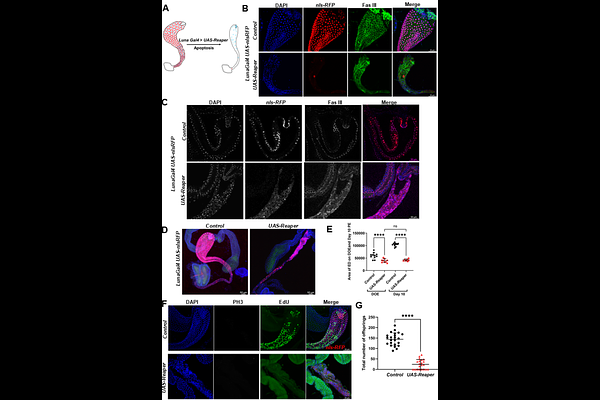A window of cell cycle plasticity enables imperfect regeneration of an adult postmitotic organ in Drosophila

A window of cell cycle plasticity enables imperfect regeneration of an adult postmitotic organ in Drosophila
Ramesh, N. A.; Buttitta, L.
AbstractThe Drosophila ejaculatory duct (ED) is a secretory tissue of the male somatic reproductive system responsible for producing components of the seminal fluid which support fertility, serve antimicrobial functions and influence the physiological changes in the female after mating. The ED is a simple organ made up of secretory epithelial cells that are encased by extracellular matrix and a layer of innervated contractile muscle. These secretory cells are post-mitotic and lack known stem cells or progenitors in the adult, but they are not fully quiescent. They undergo a variant cell cycle called endoreplication immediately post-eclosion to increase organ size and protein synthesis capacity. Polyploid and post-mitotic tissues often face unique challenges in response to cell loss due to their inability to proliferate. Here, we show that the adult ED is capable of significant recovery after cell loss due to a combination of increased nuclear and cellular hypertrophy that partially restores tissue mass and organ function. The early cell cycle plasticity of this adult tissue is critical for this recovery, as older tissues that have few or no endocycles exhibit reduced capacity for recovery after cell loss. Together, our findings establish the Drosophila ED as a model to study post-mitotic polyploid tissue repair and highlight a combination of endocycles and hypertrophy as a key mechanism for functional regeneration in the absence of mitosis.